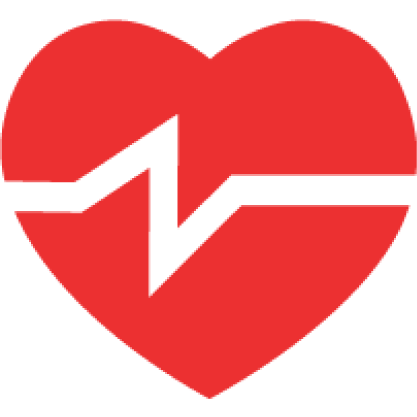Education Playbook
This playbook provides guidelines for public and private K-12 schools, community colleges and universities in Greater Des Moines (DSM). Specific university departments are encouraged to consult the playbooks for other industries that are closely related to their own core services as appropriate.
Sample: K-12 Public School Risk Profile
This risk profile has been determined for K-12 public schools in DSM. The profile shows frequency, or how many people in a day; duration, or length of typical interaction; and variety, or the number of different people.*
Schools have had to rapidly adapt to a new learning environment over the summer, rolling out plans for in-person, hybrid and all online school environments. Most Iowa universities plan to offer a combination of in-person and online classes, with in-person classes focused on technical and lab courses that cannot be completed remotely. According to the Governor's Proclamation of Emergency signed July 17, 2020 and guidance from the Iowa Department of Education. K-12 schools are required to provide 50% of instruction for core classes in-preson, otherwise they will need to make up the time in the future for students to receive credit. Additional guidance from the Iowa Department of Health and Iowa Department of Education issued July 30, 2020 specify that school districts may request permission to hold more than half of their classes online if the district is in a county where 15% of people tested for the coronavirus are positive and if the schools have absenteeism rates above 10%. On January 29, 2021, Governor Reynolds signed a bill requiring schools offer an in-person learning option through Wednesday, June 30.
|

Lack of High-Speed
Internet
|

Lower Test Scores
for Students
|

Suspended Graduation
Requirements
|
|

|
Online Learning Options
COVID-19 has opened up new learning pathways for students and educators. For some families, virtual school is the preferred mode. Some school districts are now considering offering options for in-person learning and remote learning in the fall.
|
|

|
Internet Connectivity and Technology Needs
In a variety of situations, students’ opportunities to learn have been hampered by limited access to internet connectivity and technology devices. To help schools and districts address internet connectivity and technology device access issues, Gov. Kim Reynolds and the Iowa Department of Education awarded $26.2 million to districts, nonpublic schools and colleges and universities primarily to increase internet connectivity for students for the 2020-21 school year.
|
|

|
Learning Gaps
Early data on elementary students from several national studies have shown a decline in both reading and math learning during the pandemic. School districts in Iowa and around the country are adopting various of ways to fill in the gap, including using tutors, intensive summer school and afterschool programs. Most recently, districts have also been increasing the number of academic interventionists they employ as a way to combat learning loss.
|
Health & Sanitation
- Consistent with IDPH guidance and school policies, staff or students who are ill should stay home. Employees who have had close contact with someone with COVID-19 should consult CDC guidance on when to self-quarantine.
- Conduct health checks in accordance with the most up to date recommendations from the local public health department.
- Teach and reinforce washing hands with soap and water for at least 20 seconds following CDC guidance on when and how to wash your hands. If soap and water are not readily available, teach and reinforce use of a hand sanitizer that contains at least 60% alcohol (if applicable and/or age appropriate) using CDC guidance.
- Train all employees on appropriate cleaning and disinfection, hand hygiene and respiratory etiquette.
- Appropriate PPE should be worn in accordance with the most up-to-date recommendations form your local public health department.
- Schools should protect the confidentiality of employees and students/families in their personal health who may or may not wear a face covering. Local decisions or policies related to facial coverings are made in collaboration with the school's local public health, current proclamations issued by the Governor and legal counsel.
- Provide the appropriate personal protective equipment (PPE) and training for employees who have a medium to high risk of exposure or as determined by their job-related tasks. Teach and reinforce the prevention of stigma associated with the school personnel use of PPE to support a respectful, inclusive and supportive work environment.
- Regularly clean high touch surfaces and objects (for example, playground equipment, door handles, sink handles, toilets, drinking fountains) within the school and on school buses at least daily or between use as much as possible.
- Offer options for faculty and staff at higher risk for severe illness (including older adults and people of all ages with certain underlying medical conditions) that limit their exposure risk (e.g., telework and modified job responsibilities).
- Offer options for students at higher risk for severe illness that limit their exposure risk (e.g. virtual learning opportunities).
- Provide inclusive programming for people with special healthcare needs and disabilities that allow on-site or virtual participation with appropriate accommodations, modifications and assistance (e.g., students with disabilities may have more difficulties accessing and using technology for virtual learning).
- Consistent with applicable law, put in place policies to protect the privacy of people at higher risk for severe illness regarding underlying medical conditions.
- Universities should develop a plan for students who develop symptoms of, or test positive for or have close contact with a person with COVID-19. Students should isolate or quarantine at their current place of residence, or arrange for accommodations on or near campus to isolate and attend virtual classes. This plan should address linking students to any support services offered by their health departments. Sending people with COVID-19 to distant homes is not desirable because it could lead to community spread.

Space & Process
- Establish school policies and implement structural interventions to promote physical distance between people.
- In elementary schools, students should be at least three feet apart. In middle schools and high schools, students should be at least three feet apart in areas of low, moderate or substantial community transmission. In areas of high community transmission, middle and high-school students should be six feet apart if cohorts are not possible.
- Maintain six feet of distance in the following settings:
- Between adults (teachers and staff), and between adults and students, at all times in the school building. Several studies have found that transmission between staff is more common than transmission between students and staff, and among students, in schools.
- When masks cannot be worn, such as when eating.
- During activities when increased exhalation occurs, such as singing, shouting, band or sports and exercise. Move these activities outdoors or to large, well-ventilated space, when possible.
- In common areas such as school lobbies and auditoriums.
- Use cohorts, and maintain six feet of distance between cohorts where possible. Limit contact between cohorts. In areas of substantial (orange) and high (red) levels of community transmission, schools that use less than six feet between students in classrooms, cohorts are recommended, with at least six feet maintained between cohorts.
- Remove nonessential furniture and make other changes to classroom layouts to maximize distance between students.
- Face desks in the same direction, where possible.
- For lecture halls, consider taping off seats and rows to ensure six-foot distancing between seats.
- Host smaller classes in larger rooms.
- Colleges and universities should modify learning stations and activities as applicable so there are fewer students per group, placed at least six feet apart if possible.
- Provide adequate distance between people engaged in experiential learning opportunities (e.g., labs, vocational skill building activities).
- Install physical barriers, such as sneeze guards and partitions, particularly in areas where it is difficult for individuals to remain at least six feet apart (e.g., cash registers).
- Provide physical guides, such as tape on floors or sidewalks and signs on walls to ensure that individuals remain at least six feet apart in lines and at other times.
- Eliminate or decrease nonessential in-person interactions among teachers and staff during meetings, lunches and other situations that could lead to adult-to-adult transmission.
- Consider offering distance learning in addition to in-person classes to help reduce the number of in-person students and staff.
- Limit any nonessential visitors, volunteers and activities involving external groups or organizations as much as possible — especially with people who are not from the local geographic area (for example, not from the same community, town, city, county). Require all visitors to wear masks and physically distance from others.
- Create distance between children on school buses (e.g., seat children one child per row, skip rows) when possible.
- Stagger school arrival and drop-off times or locations by cohort, or put in place other protocols to limit contact between cohorts, as well as direct contact with parents.
- Alternate schedules with fixed cohorts of students and staff to decrease class size and promote physical distancing.
- Close communal use of shared spaces, such as cafeterias, if possible; otherwise, stagger use and clean regularly (for example, daily or as often as needed). Consider use of larger spaces such as cafeterias, libraries and gyms for academic instruction, to maximize physical distancing.
- Avoid offering any self-serve food or drink options such as hot and cold food bars, salad or condiment bars and drink stations.
- Colleges and universities should provide grab-and-go options. If communal dining halls or cafeterias will be used, ensure that students remain six feet apart by placing visual cues in food service lines and at tables. Clean and disinfect tables between use.
- Ensure students do not share food or utensils to include the safety of students with food allergies. Use disposable food service items (e.g., utensils, trays). If disposable items are not feasible or desirable, ensure that staff handle all non-disposable food service items and equipment with gloves and that those items are washed with dish soap and hot water or in a dishwasher. Staff should wash their hands after removing their gloves or after directly handling used food service.
- If food is offered at any event, have pre-packaged boxes or bags for each attendee instead of providing a buffet or family-style service.
- If possible, install touchless payment methods (pay without touching money, a card, or a keypad). Provide hand sanitizer that contains at least 60% alcohol near places where people pay so that they can use it right after handling money, cards or keypads.
- Consider virtual group events, gatherings or meetings, if possible, and promote social distancing of at least six feet between people if events are indoors. Limit group size to the extent possible.
- Pursue options to hold sporting events and participate in sports activities in ways that reduce the risk of transmission of COVID-19 to players, families, coaches and communities.
- Improve ventilation to the extent possible to increase circulation of outdoor air, increase the delivery of clean air and dilute potential contaminants.
- Bring in as much outdoor air as possible.
- Ensure Heating, Ventilation and Air Conditioning (HVAC) settings are maximizing ventilation.
- Filter and/or clean the air in the school by improving the level of filtration as much as possible.
- Use exhaust fans in restrooms and kitchens.
- Open windows in buses and other transportation, if doing so does not pose a safety risk. Even just cracking windows open a few inches improves air circulation.
- Take steps to ensure that all water systems and features (for example, sink faucets, decorative fountains) are safe to use after a prolonged facility shutdown.

Communication
- The words schools use when communicating matter. If a district is going to require more than what Department guidance outlines, they should only do so in consultation with public health and legal counsel. Schools are reminded that when not using the Department’s guidance word for word, they should indicate this was a locally-determined distinction.
- Post signs on how to stop the spread of illness, properly wash hands and promote everyday protective measures.
- Use communication methods that are accessible for all students, faculty/staff and other essential visitors, including parents or guardians. Ensure materials can accommodate diverse audiences, such as people who speak languages other than English and people with disabilities.
- Designate a COVID-19 office to be responsible for responding to COVID-19 concerns (this could be a person or an office, including a school nurse).
- Schools should communicate with student families that if there is a health concern, the family should speak with a health care provider. Maintain confidentiality in received reports of any staff member or student having a communicable disease or illness. Contact your local public health agency directly related to reports of communicable disease and draft communications prior to sending them out to the school community.
- Contact tracing and self-isolation may be required upon recommendation by public health. Ensure you have a plan in place to support the needs of staff and students who may be impacted. This includes knowing how to contact your local department of public health and maintaining information about attendance and class schedules with contact information if needed for exposed or affected students and staff.

Business Partnerships
Mediacom partnered with Des Moines Public Schools to provide free installation of internet services for 1,800 student households, enabling Des Moines Public Schools students to continue online learning into the foreseeable future. This was a collaboration between Des Moines Public Schools and Mediacom, supported by the Community Foundation of Greater Des Moines.
Restart Your Career
Des Moines Area Community College (DMACC) launched a new campaign called "Restart Your Career" to provide furloughed or laid off workers the opportunity to enroll in affordable short-term trainings or continuing education courses.
Recommended Playbooks
The business function playbooks include takeaways that are specific to professional functions that could be present in any business, regardless of industry.
*We note that these assessments are qualitative and based on expert-led judgment (Johns Hopkins, 2020). Currently, there are not enough detailed data available to enable quantitative risk stratification. Businesses will need to make decisions about re-initiating business activities before there are validated data to know the precise levels of risk.
Legal Disclaimer
The Greater Des Moines Partnership's DSM Forward playbook is
not intended to constitute legal advice or provide specific direction. The preparation of a business continuity or preparations plan should be undertaken with the advice and direction of appropriate specialists and personnel, in consideration of the unique circumstances impacting each business. Third-party websites or material linked to or referenced in DSM Forward are for informational purposes only and do not constitute a recommendation of The Partnership of that material or its authors.
Last updated: 5/14/2021